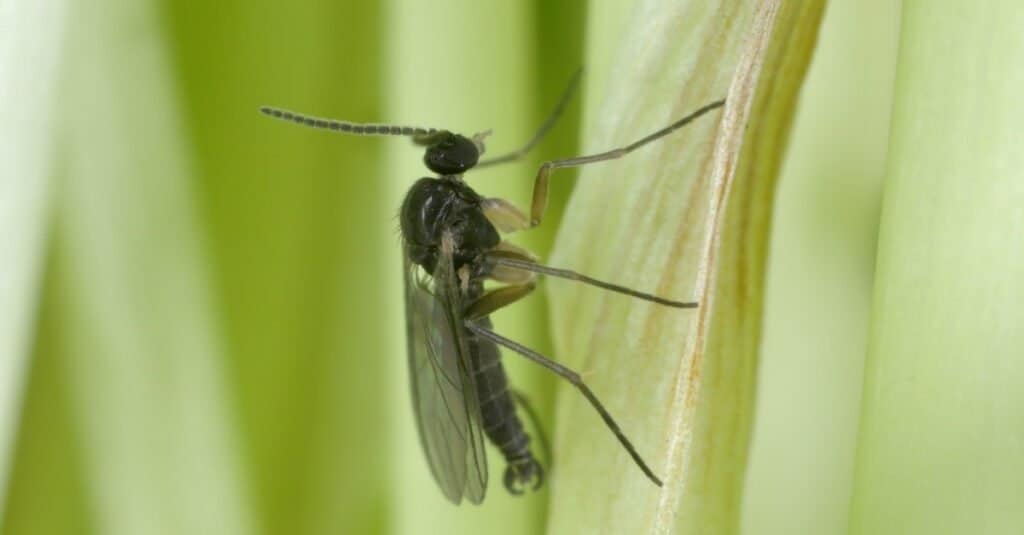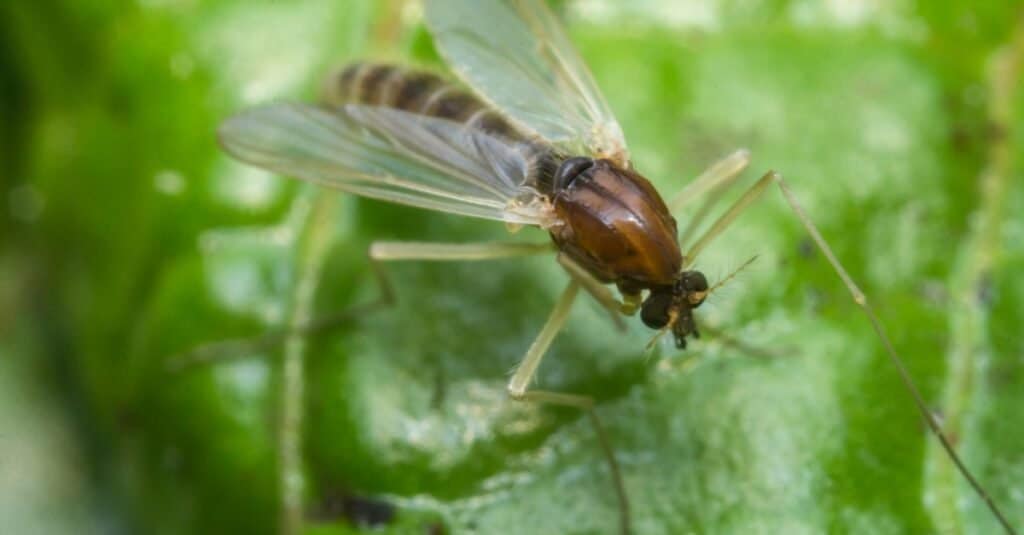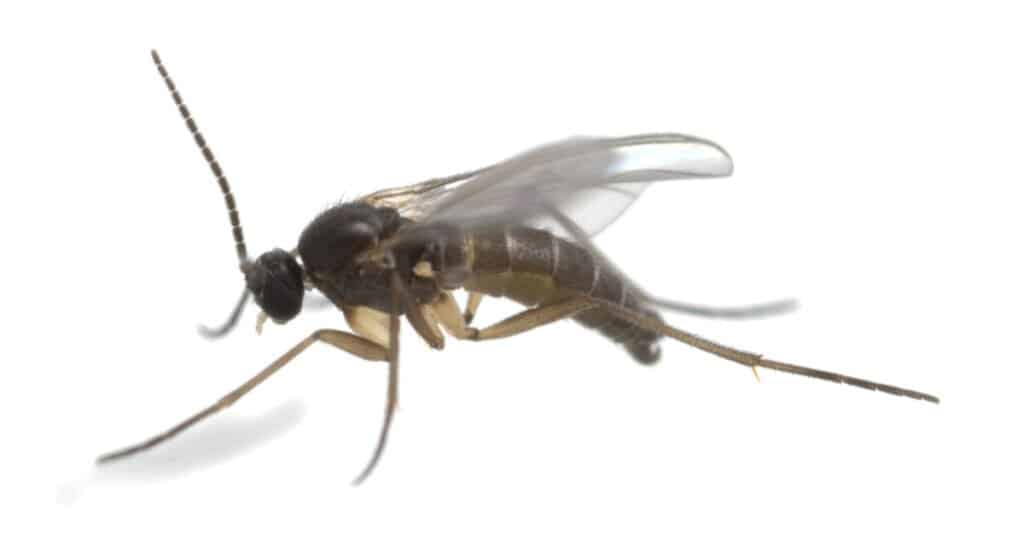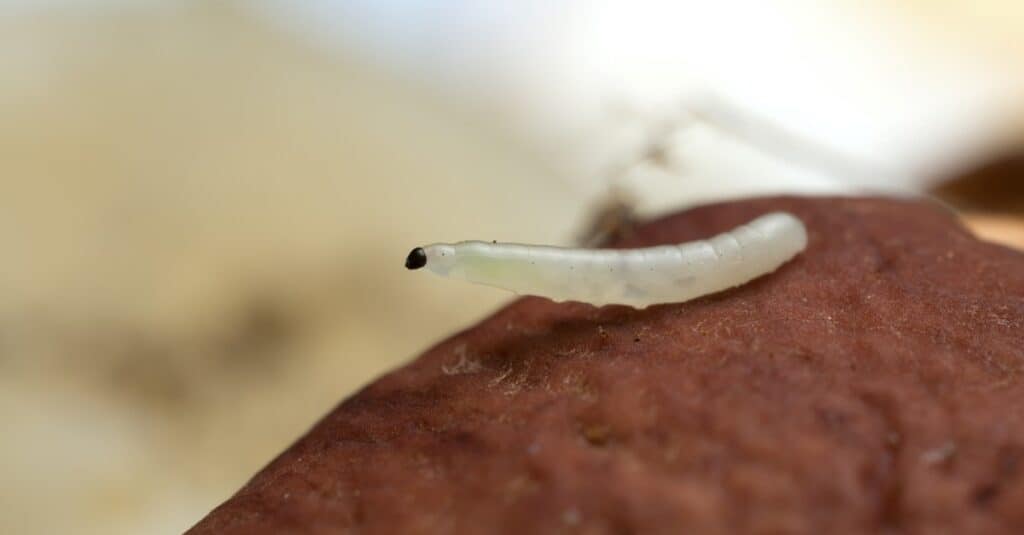You may be wondering how long something as small as a gnat might live. A creature of this size can’t possibly live for long, can it? How long do gnats live after all?
What is their life cycle like, from beginning to end?
In this article, we will discuss the lifespan of the common gnat, also known as the fungus gnat. We will learn what their life cycle is like, as well as how their life cycle compares to another common insect pest.
Let’s get started now.

The entirety of a gnat’s lifespan, from egg to adulthood, takes around one month.
©iStock.com/Tomasz Klejdysz
How Long Do Gnats Live?
How long do gnats live? Gnats live an average of one week’s time. Their life span is directly affected by temperature, as warmer weather helps gnats live slightly longer. However, most bugs of this size can’t live more than two weeks total.
The entirety of a gnat’s lifespan, from egg to adulthood, takes around one month. However, they are only fully grown gnats for a week or so, meaning the rest of their life cycle takes up the rest of that time.
Most of the time, gnats lay their eggs in soil, both indoors and out. They prefer the warmer climate of the inside of your home, but can’t handle temperatures that get too hot either.
They can’t fly particularly well, so remaining close to the plants that they were born in is something that most gnats strive for.
Speaking of gnats laying eggs, let’s take a look at the average gnat life cycle. No matter how small, all animal life cycles are fascinating!

©Ezume Images/Shutterstock.com
The Average Gnat Life Cycle
From microscopic egg to transformative pupa stages, all the way to adulthood, this is what a gnat’s life cycle is like. These types of flies all develop via complete metamorphosis and go through four different life stages. Egg, larvae, pupae, and adult. The lifespan of these gnats isn’t long, however, their ability to reproduce and keep themselves populated is a large feat considering their small lifespan.
Additionally, let’s explore the four different life stages:
Egg
A female gnat lays hundreds of eggs at a time, usually in organic material such as soil or plant matter. If conditions are favorable wherever the gnat laid her eggs, they will likely hatch in five days or less.
However in colder temperatures, gnat eggs may need over a week before they are ready to hatch.
Laying eggs in soil or organic material is a necessary part of the gnat life cycle. This will allow the larvae to consume adequate nutrition while they grow and pupate.
There are many different generations of gnats during a single year, as they continually breed.
Larvae and Pupae
Once the gnats have fully developed inside of their eggs, they emerge as small larvae. These worm-like creatures begin to consume the organic soil that they were born in.
For the most part, this isn’t a cause for concern if you happen to own house plants surrounded by gnats.
However, if too many larvae are hatched in the same plant, it can cause root damage as they eat.
The larvae will eat for at least a week, if not closer to 10 days. At that point, they will begin to pupate. This is similar to the butterfly and moth process of pupation, and it essentially means the gnat will cocoon itself until it is time to emerge as a fully grown gnat.

A female gnat lays hundreds of eggs at a time, usually in organic material such as soil or plant matter.
©Henrik Larsson/Shutterstock.com
Grown Gnat
A fully grown gnat will spend its short life breeding and otherwise consuming plant matter. More eggs will be laid, many fully grown gnats will perish as they fly around, and adverse temperature conditions will greatly affect the lifespan of an adult gnat.
Thankfully, gnats are relatively peaceful insects. They do not harm humans or animals, and rarely even cause damage to plants.
They are mostly annoying, and can be a pain if too many hatch at once. No one likes walking through a cloud of gnats!
Given their reputation as another type of insect pest, what insect might compare to gnats in terms of their life cycle and lifespan?
Let’s take a look.
How Does Their Lifespan Compare to Flies?

If too many larvae are hatched in the same plant, it can cause root damage as they eat.
©Henrik Larsson/Shutterstock.com
When you think about gnats, you no doubt think about their larger pesky counterparts, house flies. Flies and gnats are different species of insects, but they often annoy us the same amount. But what other ways are flies and gnats similar? Let’s find out!
Given their larger size, house flies do live longer than gnats. They can live an average of two to three weeks, and some can live as long as 2 months. Their life span is directly influenced by their access to food, particularly sugar and protein.
House flies have a similar life cycle to gnats, growing from eggs into larvae, and then pupating into adulthood. Given the size of female house flies, they do tend to lay far more eggs than the average female gnat.
Both gnats and house flies are directly affected by temperature. Their life spans will be shorter in extreme heat and cold weather, and both of their eggs are affected by particularly cold temperatures.
The size of the average gnats may be more advantageous than the size of the average house fly. House flies tend to draw more attention and annoyance from humans who have to listen to them buzz around all day, while gnats tend to keep to themselves.
Predation aside, gnats and house flies live very similar lives on average. They are both at risk when it comes to extreme temperatures and getting swatted. Even with ideal living conditions, both of these insects don’t live particularly long.
I suppose it is for the best when you think about having these pests inside of your home!
The photo featured at the top of this post is © Ezume Images/Shutterstock.com
Thank you for reading! Have some feedback for us? Contact the AZ Animals editorial team.







